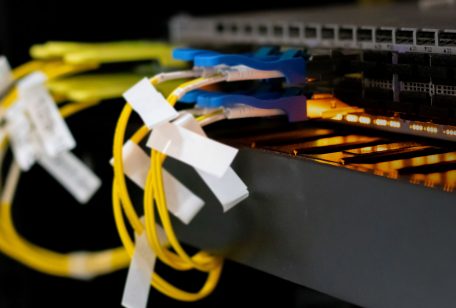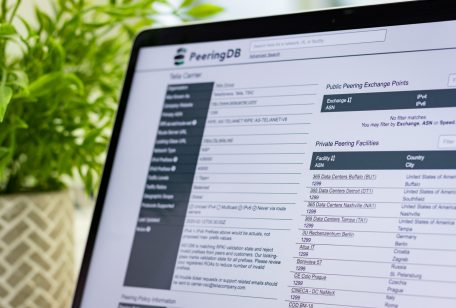Today we’ll be speaking with Alejandra Moreno, our Peering Coordinator, about peering and CDNs. We will be discussing the benefits of peering, the best practices, and how MDC has helped its clients to share traffic at MEX-IX.
We will also talk more about the world of CDNs, who they are, why it is profitable to exchange traffic with them and with whom you can peer at MEX-IX.
Ale, can you tell us what is a CDN?
A CDN, or a Content Delivery Network, is a network of servers located in different data centers around the world that are used to quickly and cost-effectively deliver a wide variety of media content.
Because the server platform is highly distributed the physical distance between the server and the user is reduced and latency is minimized when content is loading . This way users around the world can view the same high-quality content without being bogged down by excessive loading times.
What is the main function of a CDN and why are they so important?
Content Delivery Networks are used to deliver a wide variety of media content to numerous endpoints such as web browsers, mobile devices, or even game consoles. The most robust CDNs are operated by companies like Akamai®, Limelight® and Cloudflare®, which make it possible for users to access specific content no matter where they are in the world. Technically this means that the content is being sent by many different servers in different places and by being closer to the user, latency decreases, improving their experience.
What is the difference between a content provider like Netflix or Google vs a CDN?
Well, in both examples (Netflix and Google) these companies can be both content providers and distributors, in some cases content providers do not have their own distribution networks and rely on CDNs to get their content to other parts of the world.
In addition to the content, what other benefits does peering with a CDN have?
Although they are optimized for video, a CDN can deliver any type of content – like music for Spotify, or driver app feed for Uber, or even graphics that many mobile application use.
The biggest advantage is the end user experience thanks to lower latency and faster access to content. For example, many rideshare companies rely on delivering content right away because it can make the difference for users to choose between taking an Uber or switching to Cabify, Lyft, or anything else that shows the exact location of the car and prices per ride faster and more accurately.
Network operators also benefit from reducing overall IP Transit costs by peering. When sharing traffic at an internet exchange platform (IXP), bandwidth is freed up – which is how ISP costs are reduced.
What are peering best practices?
More than just good practices, these are the recommendations for those who are interested in entering the world of peering:
Have an updated Peering DB profile
Establish an ASN number. This is important since many CDNs use PeeringDB’s information and if the operator does not have their updated information they will not be able to establish a session.
Create documentation of technical configurations
Not only to have a port, but to have documentation for the logical configuration and that this facilitates the work, at this point in MDC we can help you with workshops and information for the configuration.
Stay on top of the latest news
The MDC blog is a good example for this, there you will find very useful information about peering, with posts like example “The difference between a route server and a route collector” can be very helpful for those who are beginning to peer for the first time.
Keep learning
As peering continues to evolve it is important to stay up to date with the latest developments and best practices. At MDC we are preparing educational courses to help prepare our network operators, keep an eye out for those in the future.
What CDNs does the MEX-IX contain?
The MEX-IX peering platform currently counts with the following Content Distribution Networks:
Cloudflare
This CDN delivers 15% -30% of tthe world’s Internet traffic
Akamai
With more than 20 million domains in its network
Limelight
With +40 Tbps of internet traffic in its network
These CDN’s typically carry content for the following platforms:
- Xbox
- PlayStation
- Nintendo
- Fox
- Spotify
- Rocku
- Slack
- Uber
- Adobe
- Universal
- Disney +
Which Mexican operators are peering with these CDNs at the MEX-IX?
Fortunately the Mexican market understands and knows the importance of peering in the current context, today we have the most important Mexican operators connected to MEX-IX:
How does MDC help carriers benefit from peering?
First, we like to make the necessary information available to our clients. With us you will find an extended team in every way, whether it is scheduling sessions to talk further about the CDNs or workshops to support your team with technical configuration for peering. We can also help develop a business case and provide more insights of the participants of the MEX-IX.
Want to talk more about peering?
Schedule a call with Alejandra Moreno, MDC Data Center’s Peering Coordinator, to learn more about the benefits of peering and its profitability or even quote the price of a port.








